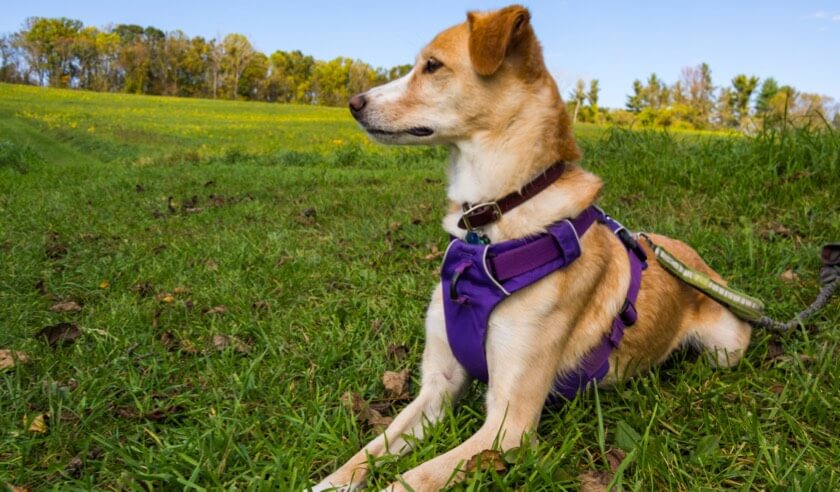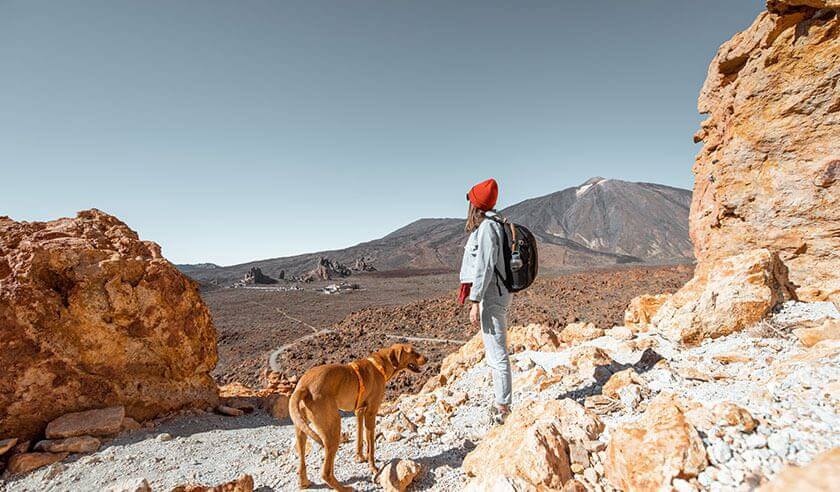Taking a stroll with your dog during the fall and winter months often means that you're walking in the dark. Morning walks may happen before sunrise, and many people don't return home from work until well after sunset.
While our dogs can see especially well during dawn and dusk and have better vision than we do in the dark, it's important to make sure you both stay safe and visible to other pedestrians, cyclists, and drivers while walking at night. Pedestrians are more likely to get hit by a car when it's dark out — but there are ways to mitigate this risk.
Stay Visible with Reflective Gear
Both you and your dog should wear bright reflective clothing and gear. Make sure that the reflective features of your jacket or coat are visible from all sides, not just the front or back. Consider wearing a reflective vest as your last layer if you prefer to switch up your outerwear based on the weather.
Dogs should have a reflective leash and collar. Ideally, a reflective harness is a better option, as reflective collars are less visible from behind and are easily hidden by thick and fluffy fur.
Light Up the Night
To increase your visibility for others, add gear with built-in lights. Make it fun with LED-powered collars, harnesses, and leashes, which have a variety of color options. You can often even set them to flashing, making your dog more noticeable.
Wear a headlight or carry a flashlight as you walk. Not only does this help others see you, but it also helps you see what's ahead. You can even wear light-up shoes or glowsticks to make it a “party” walk.
Stick To Well-Lit Sidewalks and Pathways
If your usual walking route doesn't have streetlights or good lighting, map out a new route that does. Another thing to consider for safety is using sidewalks, if available, versus walking in the street. This may or may not be doable, depending on your location. If there aren't sidewalks or streetlights, wear your reflective and light-up gear and carry a flashlight.
Watch Out for Wildlife
Certain animals, such as coyotes and raccoons, are more active during the night and at dusk and dawn. Typically, wildlife would rather avoid you and your dog, so make sure you’re making some noise to warn them of your approach, such as wearing a bell, jingling your keys, or talking to your dog as you walk. Having a whistle can even be helpful. Keep your dog on leash to prevent them from wandering off and coming face-to-face with another animal.
Don’t Get Distracted
The best thing you can do is stay alert. Be aware of your surroundings, watching and listening for any approaching cars, cyclists, and wildlife. Check behind you often — you don’t want to be startled if a cyclist or another walker suddenly passes by.
Avoid listening to music on headphones or getting distracted by your phone. Stop and check the roadway whenever crossing the street. Don’t count on others looking out for you. Make sure to look out for yourself and your dog.
ZPC-02515





